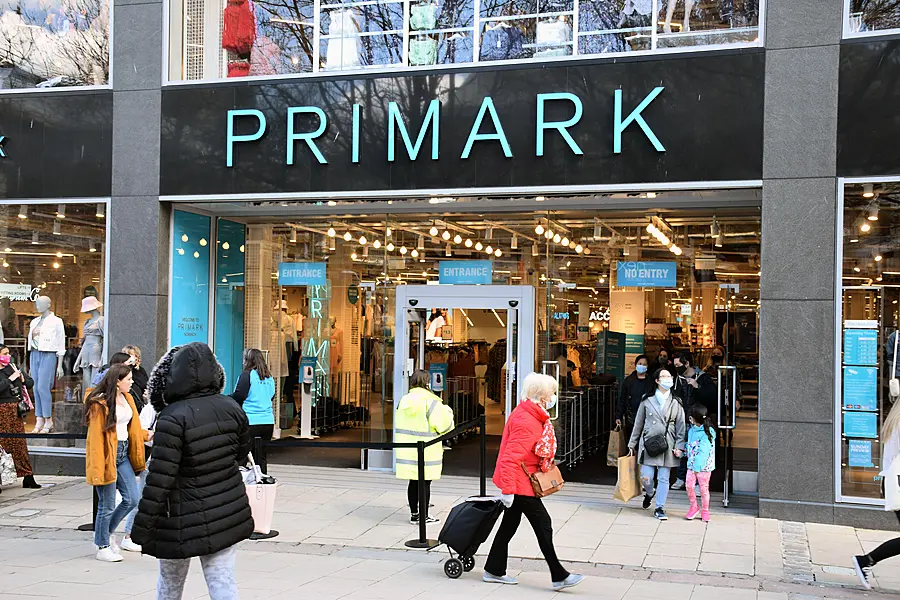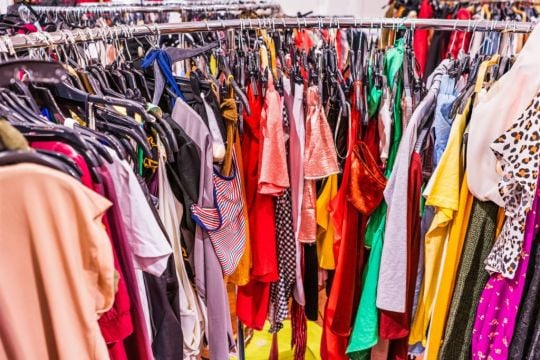As world leaders gather at COP26, the UN Climate Change Conference taking place in Glasgow, fashion brands big and small have been ramping up their sustainability efforts.
Last month, for instance, ASOS announced a new goal to achieve a net-zero impact on the environment by 2030, while Penneys revealed its clothes will be made using recycled or “more sustainably sourced materials” by the same year.
According to a report by the Ellen MacArthur Foundation and the Circular Fibers Initiative in 2017, “total greenhouse gas emissions from textiles production, at 1.2 billion tonnes annually, are more than those of all international flights and maritime shipping combined” – so change is important.
But while sustainability initiatives by so many companies sound impressive, how can you tell which ones will really make a difference – or if some of them are guilty of ‘greenwashing’?
What is greenwashing?
“Greenwashing is deployed by brands to appear more sustainable than they actually are, typically relying on inaccurate, unsubstantiated, and misleading claims that deepen consumer confusion and derail the genuine sustainability efforts made by industry players,” says Philly Grogan, fashion and textile specialist at Eco-Age.
Producing one ‘eco-friendly’ capsule collection a year isn’t going to offset the environmental effects of churning out millions of garments and shipping them thousands of miles across the globe, for instance.
“Despite what clever marketing strategies may tell us, fast fashion can never be sustainable and the proliferation of greenwashing is a growing threat to true sustainability,” Grogan argues.
What do retailers have to say?

Fast fashion brands, on the other hand, believe that they can be sustainable while following the cyclical fashion calendar of seasonal collections and producing huge quantities of clothing. But they’re realistic about the challenges they face.
Commenting on Primark’s new sustainability strategy, a spokesperson said: “This strategy has been developed over the last 18 months and builds on the work we have done over the last 10 years to become a more sustainable business. We have set out deliberately stretching ambitions that will have the biggest positive impact on the planet and the lives of those who make our products – especially given the size and scale of our business.
“However, because these reaching commitments will fundamentally transform our business and the way we make our products, driving through these changes will take time and collaboration with our suppliers, industry partners, NGOs, governments and many others – we know this will take time, especially to do this right.”
Simon Platts, responsible sourcing director at ASOS, says the retailer is committed to sharing its progress and has made ‘be transparent’ one of their four key ‘fashion with integrity goals’.
“We already declare the manufacturing level of our supply chain and have been praised for transparency in our modern slavery statements, for example, but we know there’s so much more for us to do to engage and empower our customers with the information they need to make informed decisions for people and planet,” he says.
How can you identify greenwashing?

Only time will tell whether retailers meet their long-term targets, but in the meantime, if you want to shop more sustainably there are certain clues to look out for.
Here's Eco-Age’s Philly Grogan offers her advice for avoiding greenwashing:
-Watch out for vague wording
“Many fast fashion brands’ marketing strategies rely on vague buzzwords such as ‘eco-friendly’, ‘natural’, and ‘green’, but what do these words actually mean, and how can such ambiguous terms be quantified and verified? Don’t believe the hype. The most reliable sustainability communications will focus on specific details instead of relying on vague wording.”
-Check the facts
“Sustainability claims can only really be trusted if they are based on science-based evidence, preferably verified by a third-party. At Eco-Age, we work with our clients to ensure sustainability claims can be verified through evidence and fact. Third-party certification is a good place to start, but it is not always the be all and end all.”
-Cut the capsule collections
“Is the brand addressing sustainability across the board in its operations, or through a capsule collection? While capsule collections have been a way for brands to dip their toe in sustainability, the fast fashion giants and their ample budgets are too big to simply pay lip service to sustainability through capsule collections that represent a small proportion of sales.”
-Don’t buy into selective sustainability claims
“How many times have you seen fossil-fuel fibres flaunted as ‘sustainable’ just because it’s vegan? Or a brand claiming it is sustainable because it uses recyclable packaging or donates a percentage of profits to charity? Consumers should consider what they are being told about all aspects of the supply chain. The most robust sustainability claims are made against a backdrop of regular sustainability reporting with time-bound science-based targets in place to demonstrate measurable and continuous progress.”







